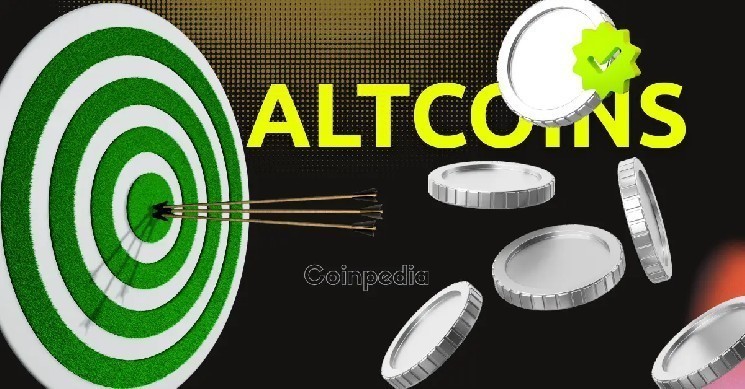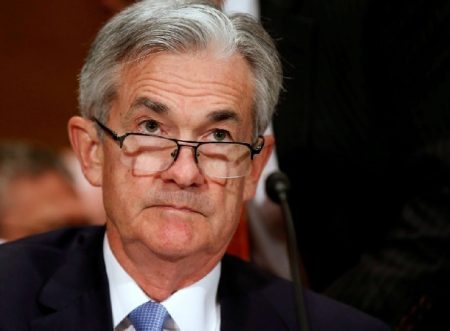Institutional Investors Quietly Accumulate Key Altcoins During Market Correction
Market Indicators Point to Strategic Accumulation as Whales Position for Q4 Rally
In the ever-evolving landscape of cryptocurrency markets, tracking the movements of institutional investors and high-net-worth individuals—commonly known as “whales”—can provide valuable insights into potential future price movements. As October unfolds as a pivotal month for digital assets, these sophisticated market participants are strategically accumulating select cryptocurrencies during the recent market downturn, potentially signaling where substantial capital flows might be directed in the coming months.
Market analysts who specialize in on-chain data have identified three cryptocurrencies that have attracted significant whale interest despite broader market uncertainty. This pattern of accumulation, occurring while retail sentiment remains cautious, aligns with historical behaviors where institutional capital positions ahead of anticipated market movements. Let’s examine the digital assets currently finding favor among the market’s most capitalized players and what their activity might indicate for the sector’s direction.
Ethereum Accumulation Accelerates Despite Price Correction
Ethereum, the second-largest cryptocurrency by market capitalization, has experienced a challenging period with its price retreating below the psychologically important $4,000 threshold—representing a 14% decline over the past month. However, this correction appears to be viewed as a strategic entry point by institutional investors who have added more than 406,000 ETH (valued at approximately $1.6 billion) to their holdings in recent days.
The underlying fundamentals supporting Ethereum’s ecosystem continue to demonstrate strength despite the price weakness. The network has been experiencing declining transaction fees—a key metric for usability—while development activity remains robust as the platform continues its technical evolution. Particularly noteworthy is the growing institutional confidence in Ethereum’s long-term value proposition, with Tom Lee’s investment firm Bitmine reportedly accumulating nearly $9 billion worth of ETH. Several market analysts have drawn parallels between Ethereum’s current market position and Bitcoin’s developmental trajectory during its earlier growth phases, suggesting similar exponential potential. This institutional accumulation pattern indicates that sophisticated investors are viewing the current price correction not as a warning sign but as an attractive entry opportunity before a potential year-end appreciation.
Aster Emerges as Strategic Whale Target With Binance Backing
In the competitive decentralized finance sector, newcomer Aster (ASTER) has captured significant attention from institutional investors since its September 17 launch. The token, which powers a perpetual decentralized exchange platform, has already demonstrated remarkable market performance with a 240% price increase despite the broader market correction. What distinguishes Aster from numerous other DeFi projects is its strategic backing from cryptocurrency exchange giant Binance and its influential founder Changpeng Zhao (CZ), positioning it as a serious competitor to established players like Hyperliquid.
The magnitude of institutional interest becomes evident through transaction data showing over $48 million worth of Aster tokens acquired by whale addresses within just 48 hours of availability. This rapid accumulation pattern typically indicates strong confidence in a project’s fundamentals and growth potential among sophisticated investors. Binance’s involvement provides Aster with both credibility and access to substantial resources that could accelerate its ecosystem development and market adoption. Market analysts specializing in decentralized exchanges suggest that if Aster successfully captures even a modest portion of the market currently dominated by Hyperliquid, token holders could experience significant appreciation from current valuation levels. The combination of institutional backing, exchange support, and concentrated whale accumulation creates a compelling case for this emerging project.
Plasma Attracts Elite Investor Attention in Stablecoin Infrastructure Space
The stablecoin ecosystem continues to represent one of the most practically applicable use cases for blockchain technology, which explains the notable institutional interest in Plasma (XPL)—a specialized layer-1 blockchain focused on stablecoin infrastructure that launched mere days ago. Despite its recent entry into the market, Plasma has already attracted substantial capital from sophisticated investors, including major cryptocurrency exchange Bitfinex and the Founders Club backed by billionaire entrepreneur Peter Thiel, lending significant credibility to the project’s vision and execution capability.
On-chain analysis reveals impressive price performance for XPL, which has appreciated from $0.70 to $1.21 since its public launch. Particularly telling is the pattern of early institutional positioning, with transaction data showing one whale address acquiring over $2.7 million worth of tokens during the initial public sale, while other institutional investors secured positions at the highly advantageous price of $0.05 per token. Even industry veteran Justin Sun, founder of the TRON blockchain, participated in Plasma trading activity, reportedly generating approximately $16 million in profits through strategic positioning. While Plasma remains in the early stages of its development and carries the heightened volatility typical of emerging blockchain projects, the concentration of elite investor interest and strategic industry partnerships suggests that sophisticated market participants see substantial potential in its technological proposition and market positioning.
Market Implications and Strategic Considerations
The concentrated institutional accumulation occurring across these three distinct cryptocurrency projects offers valuable insights for market participants attempting to navigate the current uncertain environment. While retail sentiment indicators show caution and mainstream financial media coverage remains mixed, the actions of the market’s most capitalized and sophisticated participants tell a different story—one of strategic positioning ahead of anticipated growth.
Historical cryptocurrency market cycles have frequently demonstrated that whale accumulation during corrective phases often precedes significant upward price movements once broader market sentiment improves. October has traditionally represented a transitional month for digital asset markets, with fourth-quarter performance often diverging significantly from third-quarter trends. The current accumulation patterns suggest institutional investors are positioning for potential strength in the final months of the year, particularly in projects with strong technological fundamentals and strategic industry backing.
For market participants developing investment strategies, these whale movements provide valuable context beyond traditional technical analysis. While Ethereum represents a relatively established investment with institutional-grade liquidity and market presence, Aster and Plasma embody more speculative opportunities with correspondingly higher risk-reward profiles. The common thread connecting all three is the presence of sophisticated capital accumulation during market weakness—often one of the most reliable indicators of potential future strength in the volatile cryptocurrency ecosystem. As October unfolds, monitoring continued institutional positioning will provide essential insights into whether these early accumulation patterns develop into broader market trends or remain isolated instances of strategic positioning by the market’s most informed participants.















